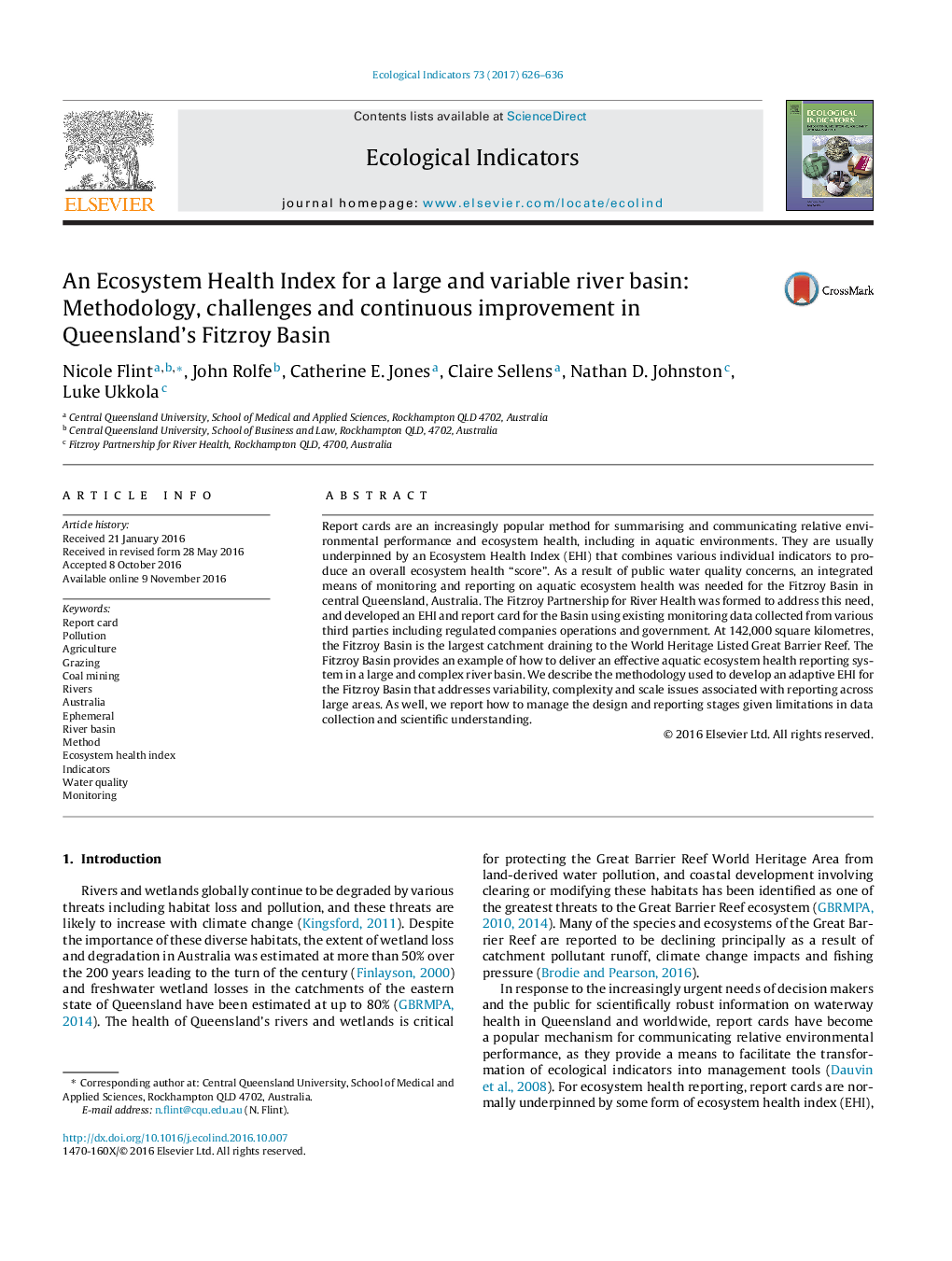| کد مقاله | کد نشریه | سال انتشار | مقاله انگلیسی | نسخه تمام متن |
|---|---|---|---|---|
| 6292662 | 1617129 | 2017 | 11 صفحه PDF | دانلود رایگان |
Report cards are an increasingly popular method for summarising and communicating relative environmental performance and ecosystem health, including in aquatic environments. They are usually underpinned by an Ecosystem Health Index (EHI) that combines various individual indicators to produce an overall ecosystem health “score”. As a result of public water quality concerns, an integrated means of monitoring and reporting on aquatic ecosystem health was needed for the Fitzroy Basin in central Queensland, Australia. The Fitzroy Partnership for River Health was formed to address this need, and developed an EHI and report card for the Basin using existing monitoring data collected from various third parties including regulated companies operations and government. At 142,000 square kilometres, the Fitzroy Basin is the largest catchment draining to the World Heritage Listed Great Barrier Reef. The Fitzroy Basin provides an example of how to deliver an effective aquatic ecosystem health reporting system in a large and complex river basin. We describe the methodology used to develop an adaptive EHI for the Fitzroy Basin that addresses variability, complexity and scale issues associated with reporting across large areas. As well, we report how to manage the design and reporting stages given limitations in data collection and scientific understanding.
Journal: Ecological Indicators - Volume 73, February 2017, Pages 626-636
